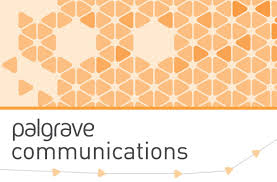L’article. Girls’ perceptions of boys with violent attitudes and behaviours, and of sexual attraction, publicat per Lídia Puigvert, Loraine Gelsthorpe, Marta Soler-Gallart i Ramon Flecha, a Plagrave Communication.
Resum
Violence against women is a reality that is still present in Europe and a serious public health threat worldwide. Fortunately, investment is being made to raise awarness at the national and EU levels and among diverse publics. However, more research is needed in order to better explain its underlying factors, and thus identify effective actions that could contribute to preventing young girls and women from becoming victims. Drawing on a theoretical approach to the preventive socialization of gender violence, in this study we report data from the quasi-experimental research project ‘Free Teen Desire’ (Marie Sklodowska-Curie Grant, 2015–2016, No 659299). Through a survey conducted on 100 female adolescents (aged 13–16) in different European secondary schools (in England, Spain, Cyprus and Finland), we analysed their pattern of attraction for both ‘hooking up’ and stable relationships towards boys with either violent attitudes and behaviour or boys with non-violent behaviour, what would be linked to gender violence victimization at a later stage in their lives. Our findings suggest that in the different European secondary schools studied, a similar pattern of attraction is recognized by female participants: although non-violent boys are highly preferred to those with a violent profile, we observed that boys with violent attitudes and behaviours are mostly preferred for hooking up, and boys with non-violent traits are mostly preferred for stable relationships. In addition to the novelty of providing quantitative data on these links (non-violent/stable relationships; violent/hook-ups) in the case of adolescents, the findings regarding the pattern of attraction towards boys with violent traits for sporadic relationships are in line with previous extensive qualitative research. This body of research marks the existence of a coercive dominant discourse that associates attraction with violence and influences the socialization processes of many girls during their sexual-affective relationships’ awakening, which has been shown to constitute a risk factor for gender violence victimization.


